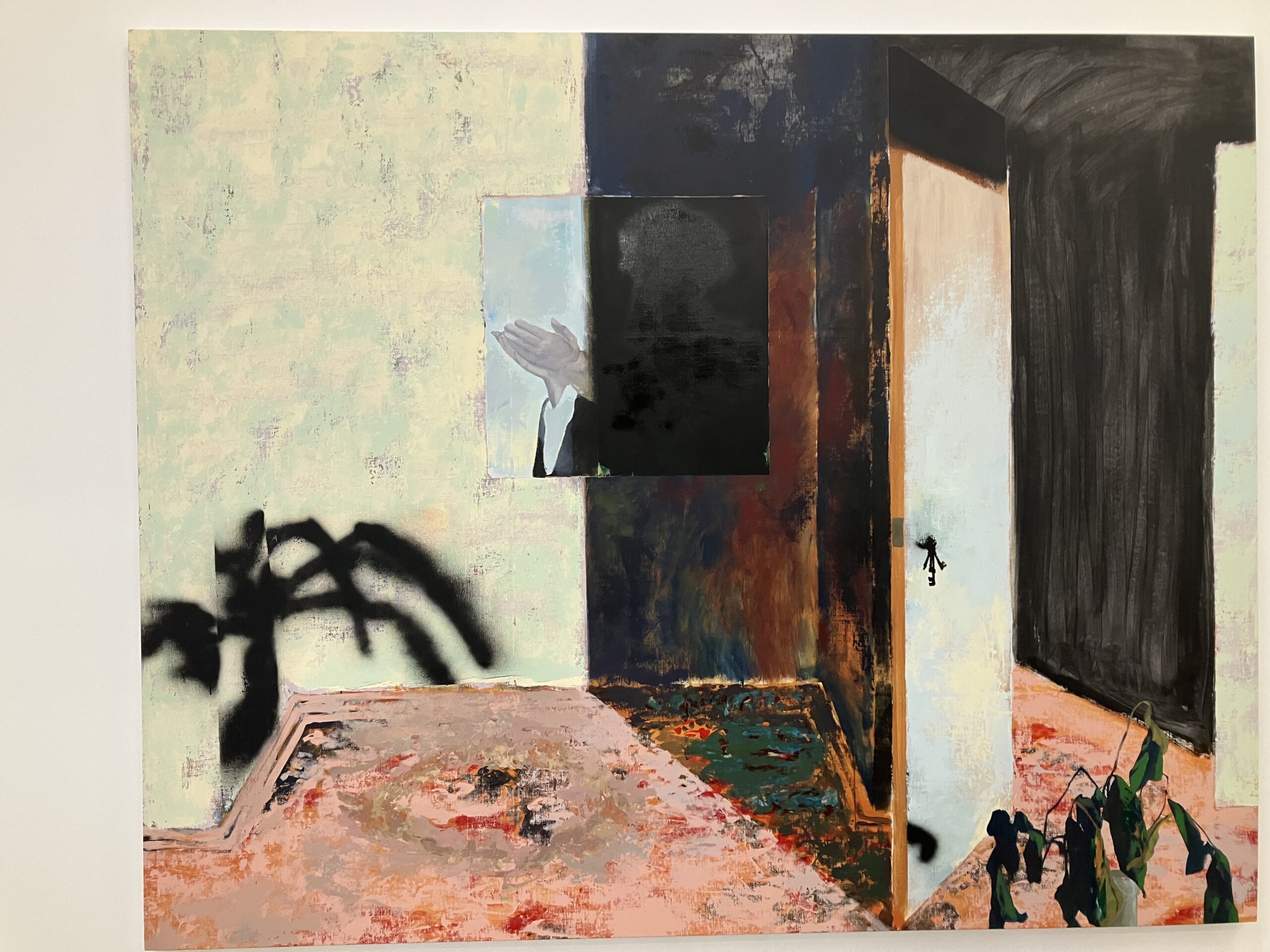The Point 0: Mohammed Sami esplora la relazione tra memoria e conflitto
Fino al 28 maggio, il centro artistico di Camden, a Londra, ospita la prima mostra dell’artista iracheno Mohammed Sami nel Regno Unito, intitolata The Point 0.

Fino al 28 maggio, il centro artistico di Camden, a Londra, ospita la prima mostra dell’artista iracheno Mohammed Sami nel Regno Unito, intitolata The Point 0.

(English translation below)
L’esposizione racconta e risveglia diversi aspetti della memoria personale dell’artista, nato nel 1984 a Baghdad, cittadino durante la dittatura di Saddam Hussein e poi rifugiato in Svezia. Risveglia anche estratti di memoria collettiva, in cui l’identità dell’individuo si deve riconciliare con tempi di guerra e sofferenza, deve imparare a resistere e vivere in un periodo di trauma prolungato e di cultura frammentata, elementi pertinenti alla guerra in Iraq.
Mohammed Sami esplora nozioni di tempo e conflitto con dipinti di grande taglia con poca presenza umana: le opere esposte emanano un senso di claustrofobia che racconta la vita quotidiana durante la guerra del suo Paese – ma tutti i luoghi sono vuoti, senza vita.
Nel rappresentare oggetti comuni, come il materasso, la sedia e le varie strutture architettoniche, l’assenza dell’individuo è innegabile e inquietante. L’identità dell’essere, circondato da oggetti usati nella propria vita quotidiana, scompare in tempi di conflitto, perché è forzata a ridefinirsi in un nuovo contesto.
Mohammed Sami crea un gioco d’ombre che spinge il pubblico a domandarsi cosa si nasconda dietro questa quotidianità. In diverse opere si ritrova la sagoma, non-esplicita, di Saddam Hussein, della dittatura e dell’oppressione che continua a governare il suo popolo.
Un esempio: nel centro della stanza si trova un grande quadro che rappresenta tante sedie, nessuna usata, e nessuno presente. Alcuni pensano a un vecchio cinema o teatro, altri a un cimitero. Poi, il titolo dell’opera rivela The Parliament Room, ovvero “La Sala del Parlamento” – teatro e luogo di morti – sono entrambe due riflessioni giustificate in questo contesto, e così l’artista non impone un significato, ma collega esperienze personali per cercare di comunicare la realtà vissuta dagli iracheni.
La capacità di Mohammed Sami nel rendere le emozioni scatenate dai dipinti universali è essenziale al cercare di capire l’esperienza altrui della guerra, e della memoria della guerra. Non è solamente un’esperienza vissuta da uno straniero lontano, la cui identità diventa per sempre distaccata dal mondo, ma si riflette invece in un sistema globale.
Nell’interruzione delle abitudini giornaliere in un tempo di conflitto, gli oggetti diventano punto di riferimento, di ricordo, ma anche di distacco. Il loro uso è forzato a cambiare. La forza delle opere di Mohammed Sami si trova nella capacità ad immaginare ciò che esiste nell’assenza, quello che resta sepolto negli intimi ricordi umani di un periodo di guerra, che cerca di re-identificarsi ad un presente dove guerra diventa storia.
ENGLISH VERSION
Until May 28, the Camden Arts Center in London is hosting Iraqi artist Mohammed Sami’s first exhibition in the UK, titled The Point 0.
From the 27th of March to the 28th of May, the Camden arts centre in London hosts the first exhibition of the Iraqi artist Mohammed Sami in the United Kingdom, entitled The Point 0. The exhibition narrates and awakens different aspects of the personal memory of the artist, who was born in 1984 in Baghdad, a citizen during the dictatorship of Saddam Hussein and then a refugee in Sweden. It also awakens fragments of collective memory, in which the identity of the individual must reconcile with times of war and suffering, must learn to resist and live in a period of prolonged trauma and fragmented culture, elements pertinent to the war in Iraq.
Mohammed Sami explores notions of time and conflict with large-scale paintings with little human presence: the exhibited works exude a sense of claustrophobia that tells the daily life during the war in his country – but all the places are empty, lifeless. In representing common objects, such as the mattress, the chair and the various architectural structures, the absence of the individual is undeniable and disturbing. The identity of human beings, surrounded by objects used in daily life, disappears in times of conflict, because it is forced to redefine itself in a new context. Sami creates a play of shadows that pushes the audience to wonder what is hidden behind this everyday life. In various works one finds the silhouette, not explicit, of Saddam Hussein, of the dictatorship and the oppression that continues to govern the Iraqi people.
An example. In the centre of the room is a large painting representing many chairs, none used, and none present. Some think of an old cinema or theatre, others of a cemetery. Then, the title of the work states The Parliament Room, the imagination of a theatre and place of death are both justified reflections in this context. So, the artist does not impose a meaning, but binds personal experiences to try to communicate the reality experienced by Iraqis. The ability of Mohammed Sami to make the emotions unleashed by his paintings universal is essential to trying to understand the experience of others of war, and the memory of war. It is not only an experience experienced by a distant stranger, whose identity become forever detached from the world; instead, it is reflected in a global system.
In the interruption of daily habits in a time of conflict, objects become a point of reference, of remembrance, but also of detachment. Their use is forced to change. The strength of Mohammed Sami’s works lies in the ability to imagine what exists in absence, what remains buried in the intimate human memories of a period of war, which seeks to re-identify itself to a present where war becomes history.
